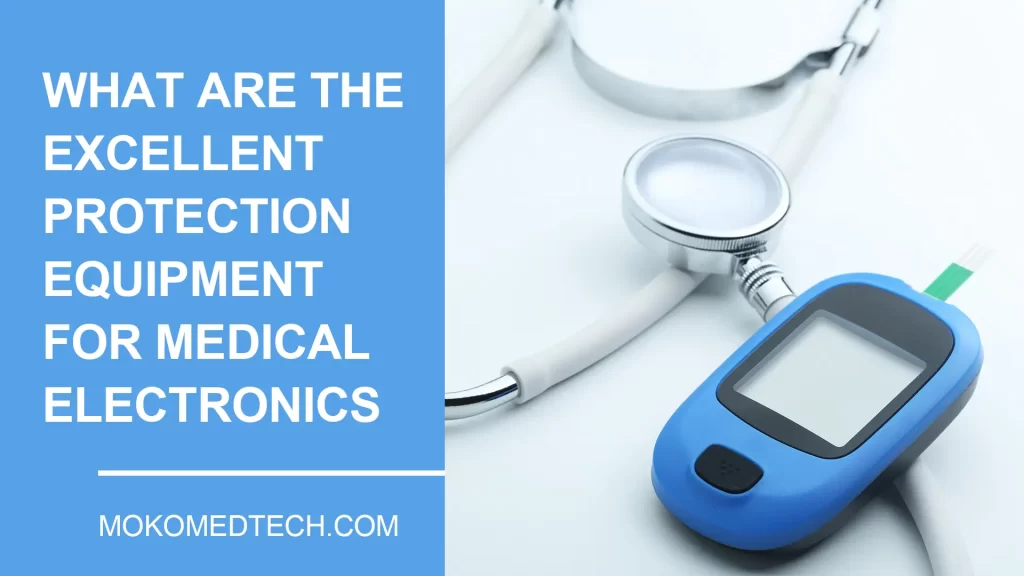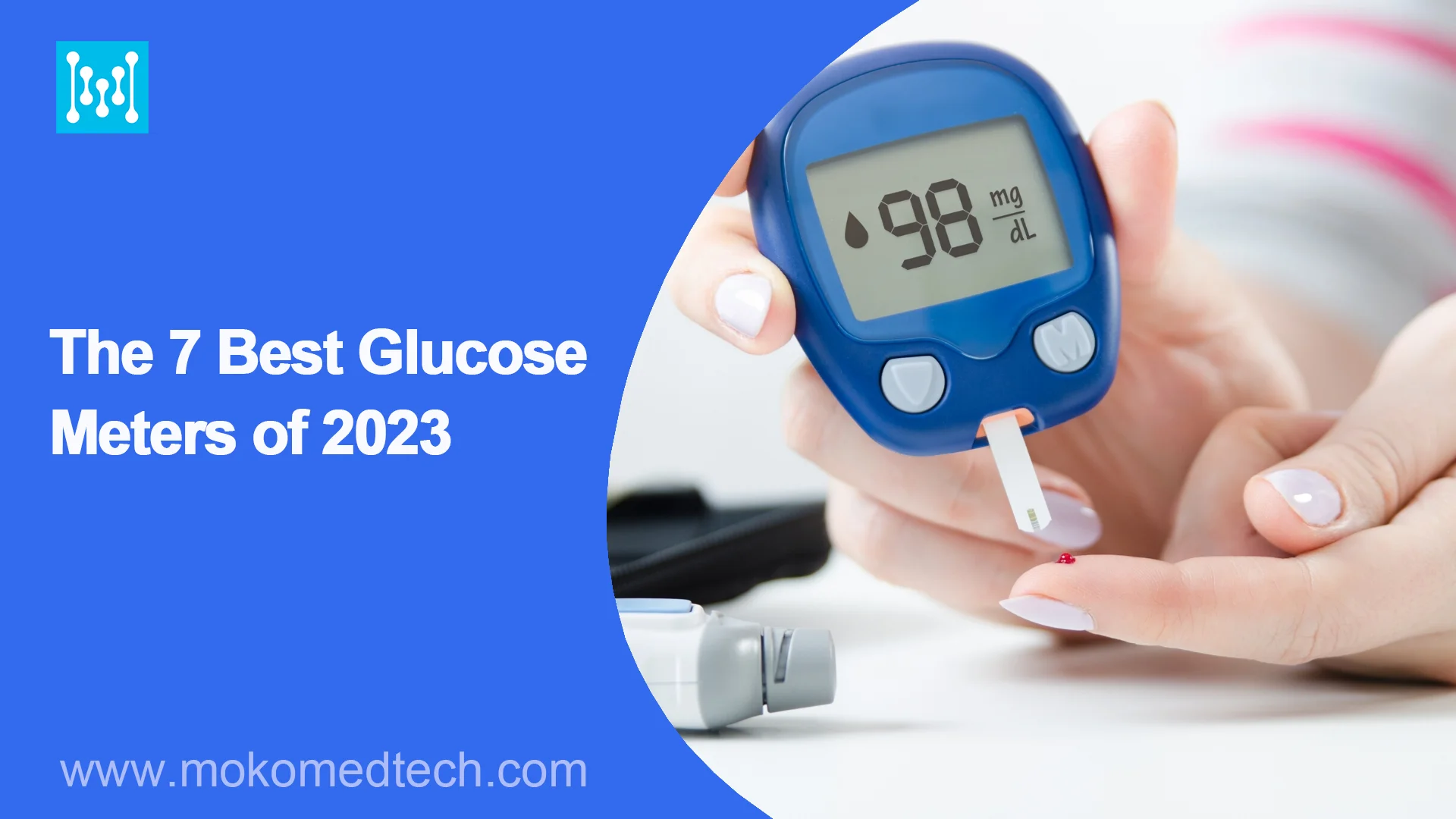Overview of Medical Electronic Equipment
Nowadays, the continuous improvement of the social medical level is inseparable from the rapid development of medical equipment. Medical equipment has become the basic condition of medical technology. And the modernization of medical equipment has become an important standard for the development of medical technology. Medical electronic equipment has become an important area of medical science. Many medical problems are increasingly inseparable from medical electronic equipment, which plays a decisive role in the breakthrough of many medical bottlenecks.
Medical electronic devices include instruments, equipment, appliances, materials or other items that are used independently or in combination in the human body, and also include the required software. The therapeutic effects on the human body surface and in the body are not obtained by pharmacological, immunological or metabolic means, but rather through the medical device products that play a supporting role. During use, it is intended to achieve the following intended purposes. Prevention, diagnosis, treatment, monitoring, and mitigation of disease; diagnosis, treatment, monitoring, mitigation, and compensation for injury or disability; study, replacement, and regulation of anatomical or physiological processes; and pregnancy control.
Characteristics of Medical Electronic Equipment
Medical electronic equipment is a very broad concept that includes a number of medical devices, home medical devices and private healthcare electronics. The precision of professional medical devices is much higher than that of home and private products. We will mainly talk about professional medical devices in this article.
The hospital’s rehabilitation treatment of patients cannot be done without the assistance of medical electronic equipment. The maintenance of hospital medical equipment is an important task for the hospital equipment management department, especially for large medical equipment. The maintenance of medical equipment is directly related to whether the medical equipment is able to complete its work accurately and safely, which can directly affect the hospital’s diagnosis and treatment of patients. How to reasonably use limited staff and resources to maintain medical equipment? How to balance the maintenance frequency and use frequency of medical equipment? And how to ensure the maintenance cost and use efficiency of medical electronic equipment are all difficult problems that medical needs to consider, which also shows that independent maintenance of medical equipment is a very important topic.
Objectives of Medical System Design
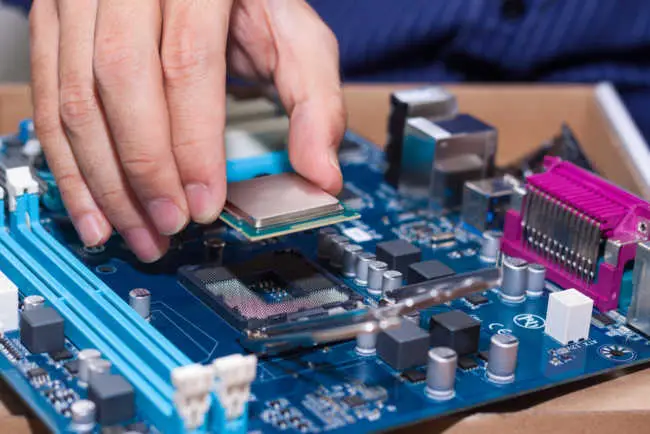
The medical system is a complex and relatively rigorous system. The operation of the system directly affects the operation of the hospital, so many hospitals tend to adopt a more conservative approach. Stability is an essential attribute of a medical system. The development of intelligence, simplicity, and security on the basis of stability are all important indicators as well.
- Stability
Most of the medical computer systems in hospitals use Windows XP Advanced Server, which is relatively stable. This system discards the extra functions of traditional computer systems. It performs well in processing data, printing data reports, and handling files of various formats. The biggest reason for using Windows XP Advanced Server is that the system has strong stability while being able to handle various files.
- Intelligence
Many hospital equipment maintenance systems can only simply display data, many operations need to be done manually. In fact, most data can be done independently by the processing system. These systems should be designed to be more intelligent. The hospital equipment maintenance system should classify each medical electronic equipment according to the frequency of use as well as the state and the degree of damage. The system will automatically notify the staff for maintenance if it is damaged. For some important and commonly used equipment, the system should notify the staff from time to time for inspection. Automatic processing of different equipment categories can reduce a lot of duplication of work and avoid omissions in the work. Intelligent medical systems allow hospital staff to do a better job of maintaining equipment more efficiently and effectively.
- Simplicity
A good management system must be concise and useful. The medical system should be able to classify and manage the equipment information, count and categorize various data, and display the data through tables and statistical charts, so that the staff can better understand the status of the medical electronic equipment. The operation of the equipment maintenance system should be simple and the operation process should be easy and reasonable, so that the staff can quickly complete their own operations without having to look for operation buttons everywhere for an operation.
- Security
The data security of the system is a very important factor, as is the medical electronic equipment maintenance system. A good operating system will regularly backup the data of the operating system. When the system has problems, we can restore the data as needed. The data permissions of employees in different positions are different, which can avoid data disorder caused by multiple operations.
Technical Requirements for Medical Electronic
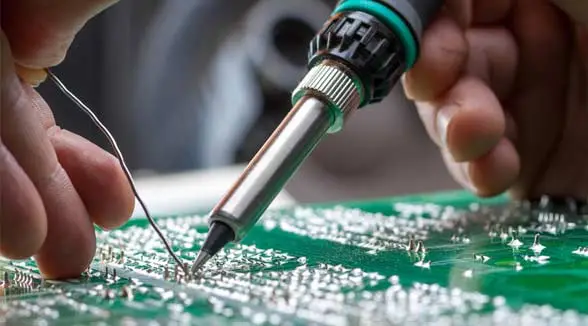
There is no power failure in a hospital. Once the power cut occurs, it may threaten the life safety of patients. Likewise, medical electronic equipment cannot be powered off. Therefore, medical equipment has very strict requirements for power supply specifications. There are special specifications in the design of medical equipment batteries.
As the global population is still increasing rapidly, and the life expectancy of most countries around the world is also increasing, the aging population and people’s health awareness are increasing as well. These have greatly promoted the market of medical electronic products. Many countries are promoting the development of information technology in the medical industry. The market of medical electronic products will become bigger and bigger, and the development will be better and better.
In recent years, all kinds of medical devices have been developing explosively. In the face of the differentiated needs of different user groups, various companies have designed and developed different medical electronic products. The market for medical electronics is large and the needs of users are diversified, which is a rare opportunity for many technology companies to develop. We should seize this opportunity, do the appropriate market research, and make every effort to develop a new generation of medical electronic devices.
In addition to the internationally recognized standards, it is very important for medical equipment to meet other requirements like basic performance and power supply. These requirements are very important since they will directly or indirectly affect patients’ health. As long as the electronic medical devices related to patient care, clinical treatment, health monitoring, or imaging scans have a power failure, loss of power, or other problems with their power source, the patient’s health will be affected. It will even cause temporary or permanent harm to the patient.
Taking laboratory instruments or diagnostic equipment as an example. Once their power supply fails, the medical staff can not make a correct diagnosis in a timely manner. Sometimes it will even lead to more tests to being done, which wastes time and also increases the mental burden of healthcare workers and patients.
In addition, the failure of a medical device’s power supply will prevent it from performing its basic functions, even if it does not pose an immediate safety problem. Therefore, medical device developers must not only fix design bugs in the product conception stage, but also continuously manage the risks involved throughout the product’s life cycle to avoid device failure.
What are the Excellent Protection Devices for Medical Electronics?
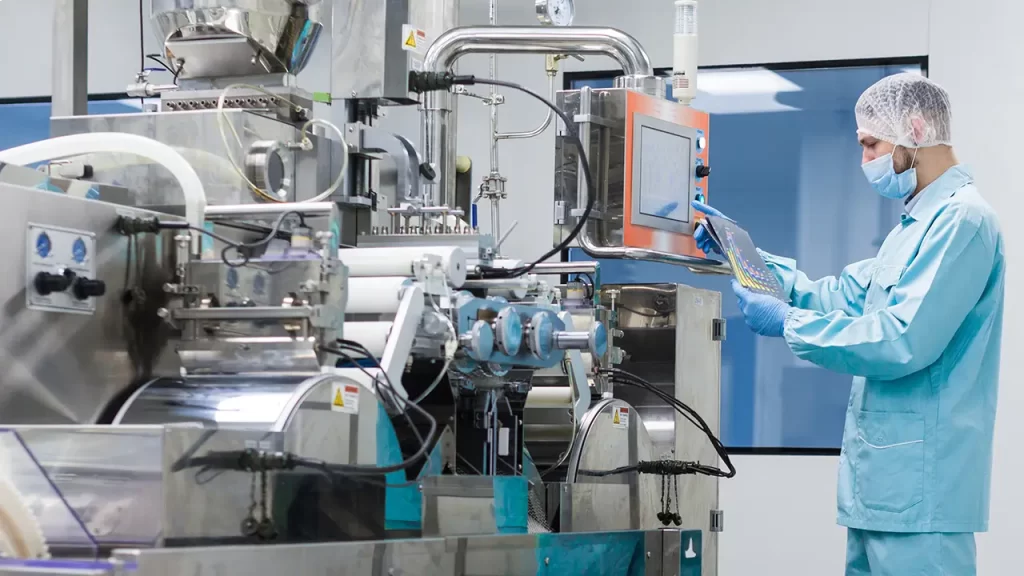
Medical device circuits are subject to a variety of electrical threats in many ways over their lifetime. In short, any power or communication interface is a potential entry point for electrical transients and is also susceptible to damage during the life of that device. Therefore, attention needs to be paid to power supplies (battery pack, DC input, AC input), microprocessors, microphone/amplifier lines, communication interfaces (wired and wireless), sensors, LCD displays, keypads, and buttons.
For more high-end equipment (imaging, diagnostic and laboratory equipment), additional protection devices are required because they are more complex and face more electrical threats. Circuits such as AC power supplies and high-voltage DC power supplies require surge protection solutions that can handle much higher energy than portable devices.
- Over-voltage suppression equipment (devices)
Gas discharge tubes (GDTs) are commonly used to protect telecommunications lines, data communication lines and signal lines of other devices (equipment) from surge voltages. The devices can withstand inrush currents of up to 40,000 amps and are therefore ideal for reducing transients caused by lightning.
Varistors (Variable Resistors) allow the current generated by excessive transient voltages to avoid sensitive equipment. There are two main types:
- Multi-layer varistors (MLVs) can provide protection against low and medium energy transients (0.05J-2.5J) for sensitive devices powered by 0-120V DC. These multi-layer varistors are most commonly used for ESD protection.
- Metal oxide varistors (MOVs) provide energy ratings from 0.1J to 10,000J, allowing sensitive components to avoid transient currents. For low-voltage DC power ports or signal ports, varistors combine the advantages of high surge and small disc size, providing an ideal choice for designs that require space savings. For example, a 10mm varistor can withstand inrush currents up to 2,000A, which is four times the maximum inrush current that a standard MOV of the same size. This device can protect circuits from electrical threats such as inductive lightning disturbances, system-switching transient pulses, and abnormally fast transients in the power supply.
Transient voltage suppression (TVS) diodes protect various circuits and components from a variety of threats common to DC power lines. The diode’s p-n junction cross section is much larger than conventional diodes, allowing larger currents to be conducted to the ground without incurring damage, and allowing transient voltages to be suppressed to levels lower than those using other technologies. The transient power ratings is from 400W to 15,000W, with a waveforms up to 15,000A@8x20us.
Semiconductor diode protection arrays (SPAs) are designed to protect analog and digital signal lines from ESD and other transient overvoltages. In addition, multi-channel arrays can be used to provide ESD protection in a smaller space and at lower clamp voltages than other technologies, providing the best possible protection.
Semiconductor discharge tubes are designed to suppress transient overvoltages in telecom and datacom equipment and are capable of conducting currents of up to 5,000A to ground within a few milliseconds of reaching the breakdown voltage.
- Overcurrent protection devices.
Fuses are the most commonly used overcurrent protection devices, and are divided into fast-break and slow-break (time-delay) types. The second type minimizes repeated replacements in the event of short but repeated overcurrent “pulses”. In portable applications, small surface-mounted fuses are often used to save space and block overvoltage and short-circuit currents.
PTC thermistor is a repeatable device instead of a fuse. When the current increases, the PTC resistance is increased and automatically limits the current. Typically, a polymer (PPTC) material is used to create a distinct inflection point between impedance and temperature. Once the overload disappears, the PPTC will cool down and restore the circuit to normal operating conditions. Thus, there is no need to replace the fuse.
Key Design Considerations for Medical Electronics

- Risk management
The first thing to consider in medical electronic product design is the requirement of risk management. In addition, to meet the basic risk management requirements proposed by ISO 14971 standard, it should also meet the requirements of IEC60601-1 Ed.3, IEC62304 and other standards. “In the actual risk management operation, equipment manufacturers should also focus on software risk management, post-market risk management, etc. In addition, during the design process, manufacturers should pay attention to the data collection of similar products, especially when designing some high-risk products, which is very useful for equipment manufacturers. Because if we can do a good and detailed analysis of the information collected, we can effectively avoid the previous mistakes and improve design reliability.” Zhou Saixin said.
The tools currently used for risk management are Process Failure Analysis (PFMEA) and Design Failure Analysis (DFMEA). PFMEA is a failure analysis of the entire production process as the product moves from design to production; DFMEA is a failure mode impact analysis during the design process. Generally, these two analysis techniques are often used in products with high risk and very high-reliability requirements. When performing a failure mode impact analysis, the level of risk is also judged from three points: severity, probability and detectability.
“There are two main key points in the design of good risk control. One is to follow the principle of inherent safety, protective measures, and safety information; the other is to ensure patient safety under a single failure.” Zhou Saixin pointed out. Specifically, the principle of inherent safety is: if risks are identified, the primary consideration is how to achieve inherent design safety. When inherent safety cannot be achieved, protective measures should be taken as well as labeling safety information. For example, when designing a product, the primary consideration is how to make it free of hazardous voltage, rather than how to deal with hazardous voltage. When hazardous voltage is unavoidable, protective measures such as insulation should be taken and warning labels should be affixed to alert users where hazardous voltage may occur.
- Reliability
The importance of reliability for medical electronic cannot be overstated. As the use environment becomes increasingly complex, the reliability challenges faced by products are becoming greater. For example, the equipment may only be fixed for bedside use in the past. But nowadays, in-hospital transfer and out-of-hospital emergency situations occur frequently, accidents such as drops and collisions may occur when moving medical electronic equipment. In addition, the load on the equipment is getting heavier and heavier. Many devices are often left on for 24 hours or even months, so how to ensure the reliability of the equipment in these cases is a problem for equipment manufacturers to think about.
Technology upgrading in the electronics industry also brings new challenges to equipment manufacturers. The miniaturization of electronic devices with high-density packaging and high-density BGA/QFN soldering under a lead-free process is an important development trend. It has completely become mainstream in consumer electronics such as cell phones and tablet PCs. Medical electronic is different from consumer electronics, which has its own unique industry chain. The current packaging process that can match the capability of the industry chain is the 0402/0.5mm package process. At such a level, most products’ SMT placement can ensure a certain yield and reliability, but medical electronic manufacturers will always face the problem of product reliability brought about by miniaturized packaging. The continuous progress of semiconductor technology has brought about the rapid replacement of chips, and the reliability problems caused by chip replacement are inevitable. “When using a new chip, you need to pay attention to the early defects of the chip. Today’s chips are becoming more and more complex. So don’t think that the reliability of the chip will be guaranteed. Like software, it will have some early immaturity factors. The use of new chips can enjoy the new technological advances it brings, but at the same time, it also faces certain risks.” Zhou Saixin said.
Software reliability in product reliability design is also very critical. Nowadays, products are becoming more and more software-oriented, and it is possible to develop a project with 70% or 80% of energy on software design. The software reliability design should pay attention to two points: the use of OTS software/SOUP software and the choice of the operating system. OTS software/SOUP software is unknown source software, some device manufacturers may download certain driver software in the open-source community. You have to pay special attention because this software may not be developed according to the requirements of medical devices and software reliability is difficult to guarantee. In addition, the choice of the operating system is also directly related to the reliability of the product. There is a wide range of operating systems now. It includes open-source and closed-source. The choice of the operating system is mainly based on the company’s products and development capabilities, and the choice of the operating system that matches the development capabilities.
- Other key factors
Designing medical electronic requires meeting safety requirements, and the IEC60601-1 standard is currently the most widely used safety standard for medical devices worldwide. Since June this year, the third edition of the safety standard has been mandatory in Europe, which applies to all new and old products. In addition to the proposed safety and basic performance of risk management, the third edition of the standard also puts forward two different concepts of operator protection measures (MOOP) and patient protection measures (MOPP), and new requirements for electrical and mechanical safety, including bottom openings, Impact testing, elevation and contamination considerations, etc. Equipment manufacturers should ensure that they meet the new requirements in the safety regulations when developing their products.
From the perspective of the easy-to-use design of medical products, the main problems currently faced by products include false alarms, complex settings and maintenance, and tender-oriented function stacking, which can lead to a significant decrease in product ease of use. Zhou Saixin believes that the solution to the problem is intelligent design, such as the addition of intelligent alarm engines, intelligent guide switching, intelligent working state identification, etc.. In addition, new human-computer interaction technology can be added, including voice prompt, new display technology, touch UI applications, etc. These can increase the ease of use of the device.
Driven by the Internet technology, the use of wireless technology to achieve interconnection between devices has become an important development trend of medical electronic. WiFi, LAN, Bluetooth, ZigBee, 3G, etc. are all common wireless technologies. Different wireless technologies have different characteristics as well as the different scopes of application. “I personally look forward to Bluetooth technology, which can make the power consumption very low and meet the current product low-power design needs.” Zhou Saixin said. He pointed out that wireless design should also consider many factors including frequency band selection, wireless authentication, data roaming, device positioning, pairing, access speed, etc.
Compared with other electronic products, the relevant standards of medical electronic products will be stricter, so it is very important to choose a correct manufacturer. MOKOMEDTECH is a professional medical equipment manufacturer. We have many years of production experience. We attach great importance to the quality of our products. Each of our products will undergo strict quality testing to ensure that customers’ products can pass various certifications.
